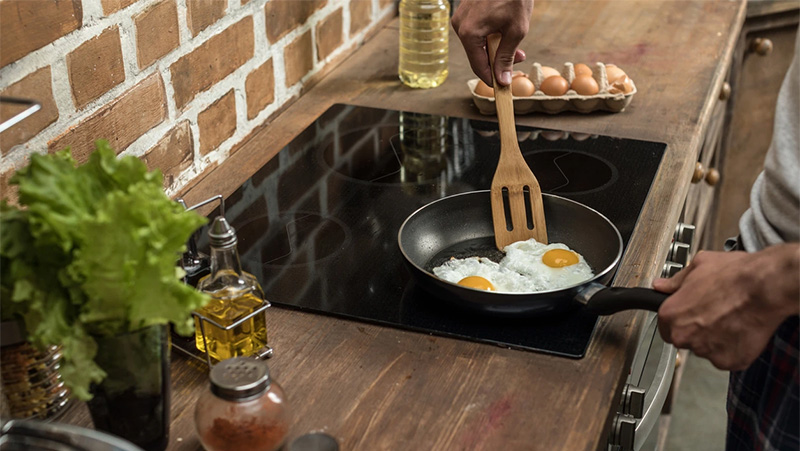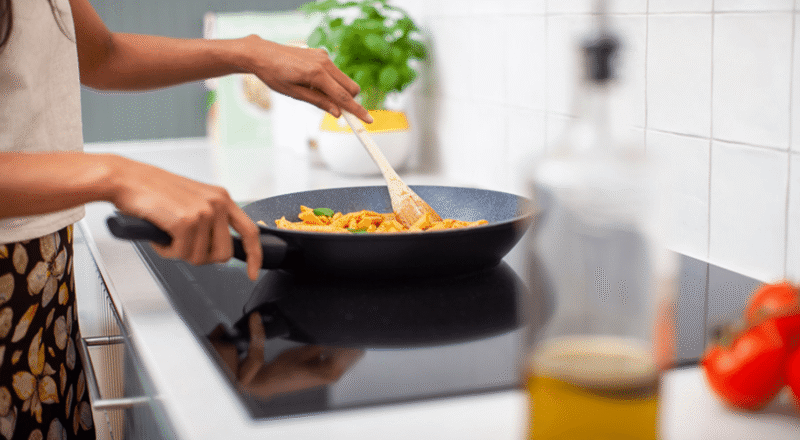In recent years, the culinary world has seen a significant shift towards induction heating as a preferred method for cooking. This modern technology promises precision, speed, and energy efficiency. However, a common question arises: How well does cast iron cookware work with induction heating? This article seeks to explore this compatibility, offering insights and guidance to kitchen professionals and home cooks alike.

Understanding Induction Heating
Induction heating is a cutting-edge cooking technology that uses electromagnetic fields to heat cookware directly. Unlike traditional methods, where the heat is transferred from the burner to the pot, induction cooktops create a magnetic field that heats the pot itself. This process is efficient and allows for precise temperature control.
How Induction Cooktops Work
Induction cooktops contain a coil of copper wire underneath the cooking surface. When electricity passes through this coil, it generates an oscillating magnetic field. This field induces an electric current in the cast iron cookware, which in turn heats the pot and cooks the food. For a more detailed explanation, you can refer to HowStuffWorks.
Advantages of Using Cast Iron with Induction
One of the primary advantages of using cast iron with induction is its excellent heat retention. Cast iron is renowned for maintaining heat, making it ideal for cooking methods that require steady, even temperatures. Furthermore, the magnetic properties of cast iron make it a perfect match for induction cooktops.
Even Heating and Energy Efficiency
When cast iron is used on an induction cooktop, the heat is distributed evenly across the entire surface of the cookware. This results in consistent cooking performance and reduces the risk of hot spots. Additionally, because the cookware itself is heated, energy loss is minimized, leading to more efficient cooking.
Potential Challenges
Despite its benefits, using cast iron with induction heating isn’t without its challenges. The weight of cast iron cookware can be significant, which may cause strain on the glass surface of some induction cooktops. Furthermore, the rough surface of cast iron could potentially scratch the cooktop if not handled with care.
Maintaining Your Cooktop’s Surface
To prevent damage, it’s crucial to lift cast iron cookware rather than sliding it across the cooktop. Regular cleaning and maintenance of both the cookware and the cooktop can also help prolong their lifespan. For more cleaning tips, visit Induction Heat & Cast Iron.
Considerations for Purchasing
If you’re considering purchasing cast iron cookware for use with an induction cooktop, there are several factors to keep in mind. Look for cookware with a flat base, as this will ensure maximum contact with the cooktop and improve heat transfer efficiency. Additionally, consider the size and weight of the cookware in relation to your cooking needs and physical capabilities.
Choosing the Right Cookware
When selecting cast iron cookware, it’s important to choose pieces that are compatible with your cooking style and the types of dishes you frequently prepare. For instance, a reversible griddle might be an excellent choice for those who enjoy grilling.
FAQs
Does cast iron work with induction?
Yes, cast iron is compatible with induction cooktops due to its magnetic properties.
Can cast iron damage induction cooktops?
If handled carelessly, cast iron can scratch the surface of induction cooktops. Lifting the cookware instead of sliding it can prevent this.
Is induction cooking energy efficient?
Yes, induction cooking is highly energy-efficient because it heats the cookware directly, reducing energy loss.

Conclusion
In conclusion, cast iron and induction heating are a powerful combination, offering both efficiency and excellent cooking performance. While there are considerations to keep in mind, such as the weight of the cookware and potential for scratching, these challenges can be managed with proper care and handling. With the right approach, you can enjoy the benefits of induction heating and the time-tested versatility of cast iron in your culinary endeavors.
This article contains affiliate links. We may earn a commission at no extra cost to you.

